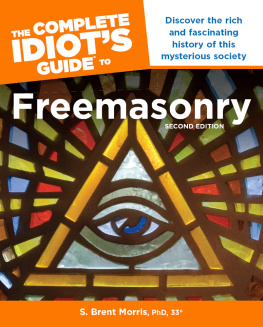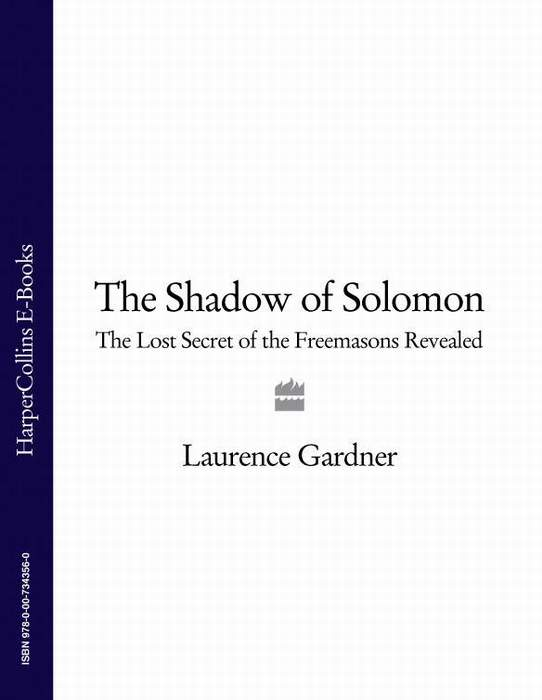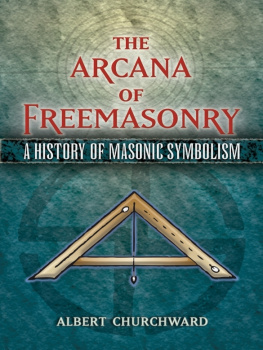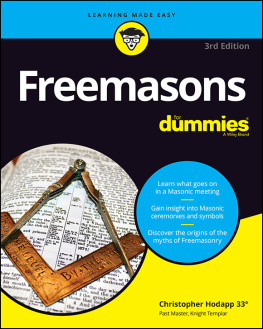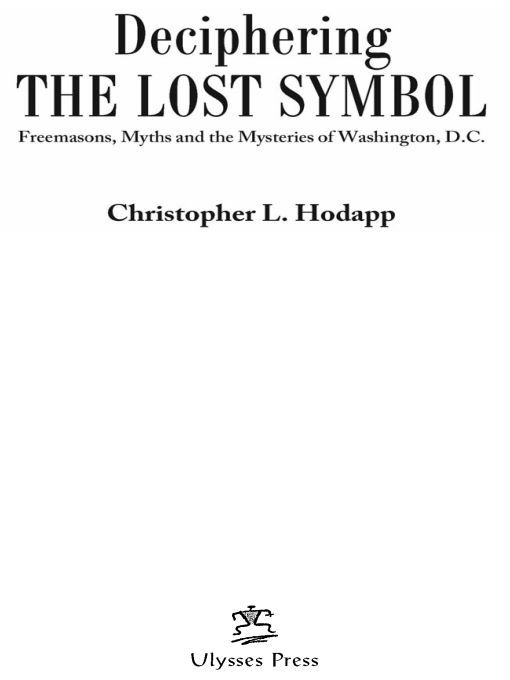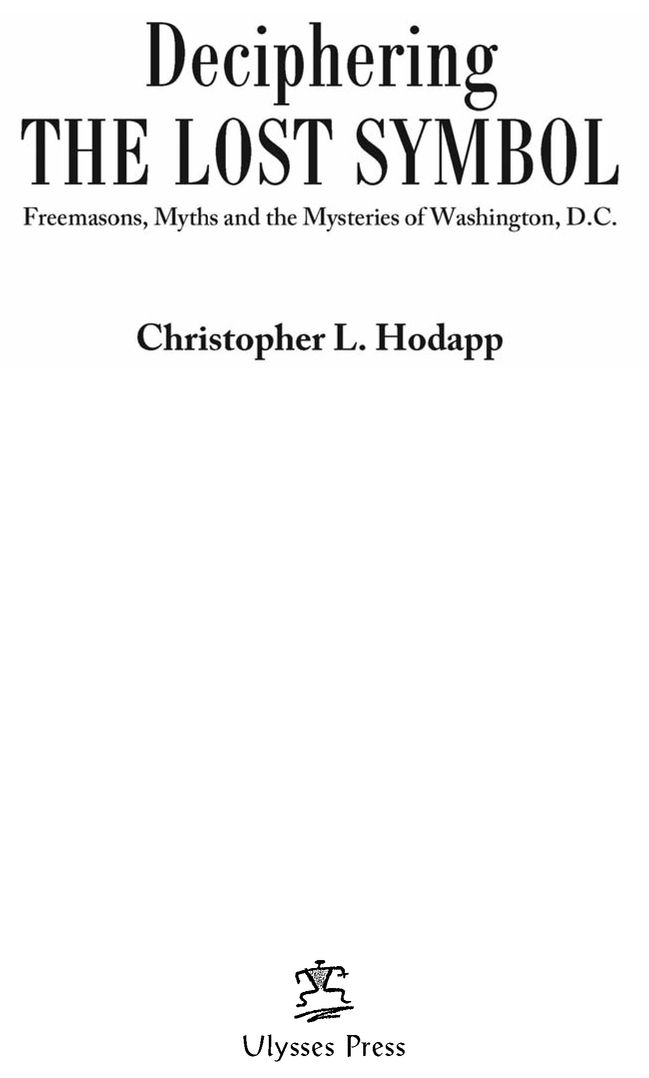Table of Contents
To the Brethren.
Acknowledgments
If ever there was a month to be a Mason in the Washington area, it was September of 2009.
My deepest thanks go to Rex Hucthens and especially to Art de Hoyos and S. Brent Morris at the House of the Temple for their friendship and their knowledge of all things Scottish Rite, and to my friend Mark Tabbert at the George Washington Masonic Memorial.
My gratitude goes to the members of the Masonic Society for their patience as I concentrated on this book instead of getting their Journal to them in a timely manner, and to Randy Williams and Jay Hochberg for covering for me. And, of course, to my friends Nathan Brindle, Jim Dillman, and Roger VanGorden for their ongoing support.
Hats off to the whole Ulysses Press team who made this book happen in record time: Nick Denton-Brown, who invited me to their party to begin with; Bryce Willett, who believed in this book before anyone else; Kelly Reed, for getting it started; Claire Chun, for her endless patience; and especially Teresa Castle, for understanding that a run-on sentence is just my style.
To my wife, researcher, historian, writing partner, and organizer of my life, Alice, who kept sanity in the house. Nothing I do would be possible without her.
And finally, to Dan Brown, who has reminded the world about who and what the Freemasons are, what they believe in, and why they remain important to society.
Introduction
There is a key to every Myster y, and every such key has been so effectively hidden that centuries have elapsed, in some cases, before its discovery
I. EDWARD CLARK, THE ROYAL SECRET
In May 2004, the reclusive author Dan Brown made a rare speech in Concord, New Hampshire, and revealed that his sequel to The Da Vinci Code would be about the Freemasons. He added that Masons should welcome this news because there is so much misinformation about the group. Was he ever right. After teasing the world for six years, in the summer of 2009, Brown finally delivered his much-anticipated sequel. Browns The Lost Symbol is a 509-page love letter to the fraternity of Freemasonry.
Like Browns previous novels, Angels & Demons and The Da Vinci Code, the book again features the fictional, tweed-jacketed, mystery-solving Harvard professor and symbologist Robert Langdon running at breakneck speed through a familiar landscapeWashington, D.C.filled with unfamiliar places, people, philosophy, history, art, science, and religion.
When The Da Vinci Code was first published in 2003, Dan Brown had intentionally placed clues within the covers artwork about his next novels subject. As Browns readers know, his books make frequent use of puzzles, symbolism, and secret-code breaking, and on the inside paper flaps of the original hardback edition, certain letters were printed darker than others. When copied down in order, they revealed a phrase that is of ritualistic significance to the fraternity of Freemasons: Is there no help for the widows son? This is part of a traditional signal of Masonic distress. (It was also a signal that Brown probably wasnt going to be writing about the League of Women Voters.) The first announced title of the book was The Solomon Key, evoking the biblical story of the building of King Solomons Temple in 1000 B.C., which is central to Freemasonrys ritual ceremonies and mythical origins. Masons were excited, but nervous as well. After all, they might wind up being portrayed as Opus Dei had been in The Da Vinci Code, as a bizarre, mysterious organization that harbors evil, bald-headed, albino assassins, or plots nefarious murders of popes, cardinals, and Interpol agents.
In the run-up to The Lost Symbols release, Masons became even more nervous. In keeping with Browns past novels, there was symbolism to be found not just in the narrative, but outside of it. Even the release date of 9/15/09 was significant: the numbers add up to 33, a number central to the Masonic hierarchy. The U.S. version of the cover depicted a wax seal featuring a double-headed eagle, the number 33, and the Latin phrase, Ordo ab Chao, or Order from Chaos, the motto of the Scottish Rite of Freemasonry; the seal was set against a background of symbols of the zodiac and alchemy, which was another cause for concern.
Meanwhile, across the Atlantic, the United Kingdoms version of the cover displayed a flaming key with a Masonic square and compasses. That symbol is similar to a graphic device used by Freemason and author Robert Lomas in a series of books that use the term The Hiram Key, and it was clearly meant to echo the originally planned title of the book, The Solomon Key.
Once The Lost Symbol was published, tense speculation ended at last. Freemasonry does indeed appear throughout the book, and it is central to the story. The very real Washington, D.C., headquarters of the Scottish Rite Southern Jurisdiction, the House of the Temple, is the setting for important, and harrowing, sequences in the thriller. However, to the relief of Masons, the book did not present them as treacherous supervillains; instead, it was almost reverential in its treatment of the fraternity.
If you havent read it yet, heres the non-spoiler description of the plot. Robert Langdon is called to Washington to give a speech at the U.S. Capitol, but it turns out to be a clever ruse by a bald, tattoo-covered evil genius named Malakh who is in search of the deepest secrets to Life, the Universe, and Everythingsecrets that supposedly are held by the Freemasons. The story involves a pint-sized stone pyramid encoded with symbols that eventually point the way to the secret knowledge of Ancient Mysteries passed down through the centuries and protected by the Masons. Langdon has to save his mentor, Peter Solomon, and Solomons sister, Katherine, from the bad guy and keep this evil genius from exposing a Masonic secret that could bring down the whole U.S. government if it were to be made public. Along the way, you get Browns brand of bewildering, nonstop didja knows? and historical tidbits, along with his trademark two-page chapters, so you blast through it like a jumbo box of popcorn.
That ends the non-spoiler portion of this book. If you havent read The Lost Symbol yet, go do it now, because I wont be squeamish from here on about dishing up the storys twists and turns in order to discuss details in Browns book and show how they relate to the true history of Freemasonry.
I am a Freemason. Lets just get that out of the way right up front. If you never heard of the Freemasons before you read Dan Browns The Lost Symbol, or if you had vaguely heard of them but were clueless about who or what the Masons are, youve still no doubt noticed that suddenly youre finding them everywhere. As a Mason, I am able to provide an insiders view of what Brown has written because I have experienced Masonic degree ceremonies and been inside the buildings that play an important role in his story. Ive studied these Masonic landmarks in depth, and all of them are discussed at length in my previous book,


